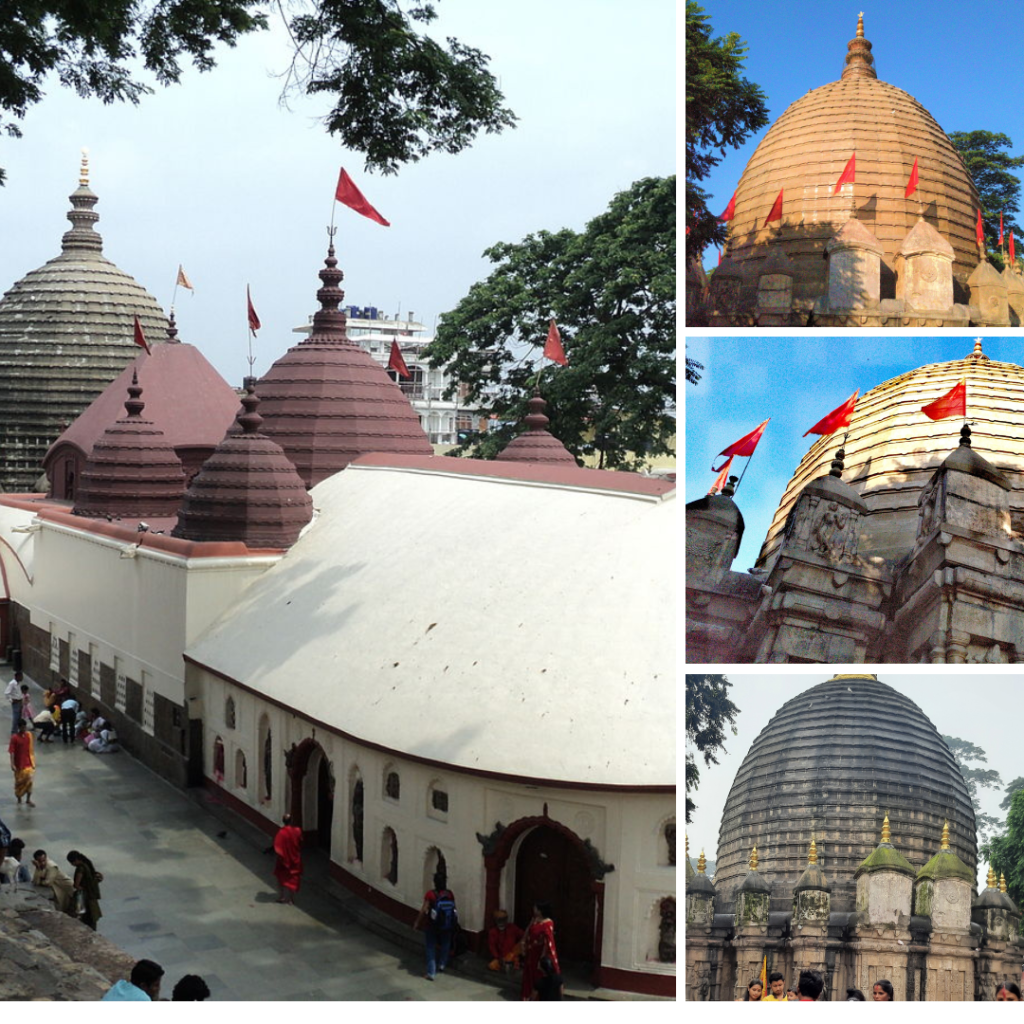Maa Kamakhya Temple
Maa Kamakhya Temple, located on the Nilachal Hills in Guwahati, Assam, is one of the oldest and most revered centers of tantric practices, dedicated to the goddess Kamakhya. The temple is a key site for the Kulachara Tantra tradition and hosts the Ambubachi Mela, an annual festival that honors the goddess’s menstrual cycle.

The Legend of Maa Kamakhya
Maa Kamakhya Temple has deep connections to Hindu mythology. It is believed to mark the place where the womb and genitalia of Goddess Sati fell after Lord Shiva carried her charred body across the heavens. According to the legend, when Sati immolated herself in protest against her father Daksha’s insult toward her husband Shiva, Shiva, overwhelmed with grief, performed the Tandava (a cosmic dance of destruction). In an effort to stop the devastation, Lord Vishnu dismembered Sati’s body using his Sudarshan Chakra. Her body parts fell in 51 different places, which became known as Shakti Peethas, with the Kamakhya Temple being the most important, as it represents the goddess of fertility and desire.
Unique Rituals and Significance
Unlike other temples where the deity is worshipped in anthropomorphic form, in the Maa Kamakhya Temple, the yoni (womb) of the goddess is worshipped in the form of a stone. The temple celebrates the natural processes of fertility, menstruation, and motherhood, which are often considered taboo in mainstream society. Every year, the temple observes the Ambubachi Mela, a festival that marks the menstruation of the goddess. During this time, the temple remains closed for three days, symbolizing the natural cycle of the Earth and its connection to fertility.
When the temple reopens on the fourth day, thousands of devotees and tantriks flock to the temple to seek the goddess’s blessings. The Ambubachi Mela is one of the largest religious gatherings in India, attracting sadhus, ascetics, and pilgrims from around the world.
Architecture of the Temple
The architectural style of the Maa Kamakhya Temple is a blend of Assamese and Mughal influences. The temple features a beehive-like dome, intricately carved panels, and sculptures of Hindu gods and goddesses. Inside the temple, there is no image or idol of the goddess, but rather a natural underground spring that moistens the symbolic stone yoni, considered to be the essence of Goddess Kamakhya.
The temple complex also includes ten other temples dedicated to different forms of the goddess, such as Tara, Kali, Bhairavi, and Chinnamasta. These shrines emphasize the temple’s connection to tantra and its role as a center for spiritual learning and mystical practices.
A Hub for Tantric Practices
Kamakhya Temple has long been associated with Tantrik rituals and practices. It is considered one of the most powerful places for Tantra, which focuses on worshipping the divine feminine energy. Tantriks believe that the temple is an ideal place to practice their rituals, as it represents the raw, primal forces of creation and destruction. These tantric practices give the temple a unique aura, with stories of mystical powers, ancient rituals, and spiritual transformations echoing in its halls.
The Spiritual and Cultural Significance
For the people of Assam, the Kamakhya Temple is not just a religious site; it is a symbol of their cultural identity. The temple plays a key role in various Assamese festivals, including Durga Puja, when the goddess is celebrated in all her glory. The temple’s influence extends beyond religion, as it is a significant part of the state’s historical and cultural fabric.
Thousands of devotees, both locals and tourists, visit the temple every day to seek the blessings of Maa Kamakhya, believing in her power to fulfill desires, bless couples with children, and grant spiritual enlightenment. The temple is also a major pilgrimage site for tantriks, who come from far and wide to perform rituals and tap into the divine feminine energy that Kamakhya embodies.
Visiting Maa Kamakhya Temple
Visitors to Kamakhya Temple often describe a profound spiritual experience, as the energy of the place is believed to be palpable. The temple is easily accessible from the city of Guwahati, and a climb up the Nilachal Hill offers stunning views of the Brahmaputra River and the surrounding landscape.
The temple is open to the public throughout the year, but it’s advisable to visit during the early morning hours to avoid long queues. The Ambubachi Mela, held in June, is the most popular time to visit the temple, but it can be very crowded.
Conclusion
The Maa Kamakhya Temple is more than just a religious structure. It is a living symbol of the connection between the divine feminine, nature, and human existence. With its rich history, unique rituals, and powerful spiritual presence, Kamakhya continues to inspire devotion, reverence, and wonder among millions of devotees. Whether you’re a spiritual seeker, a history enthusiast, or simply a curious traveler, a visit to the Kamakhya Temple is an experience that lingers in the heart and soul.
The temple’s mystical aura, combined with its deep-rooted significance in Indian mythology and tantric practices, makes it a must-visit destination for anyone looking to experience the profound spiritual traditions of India.
